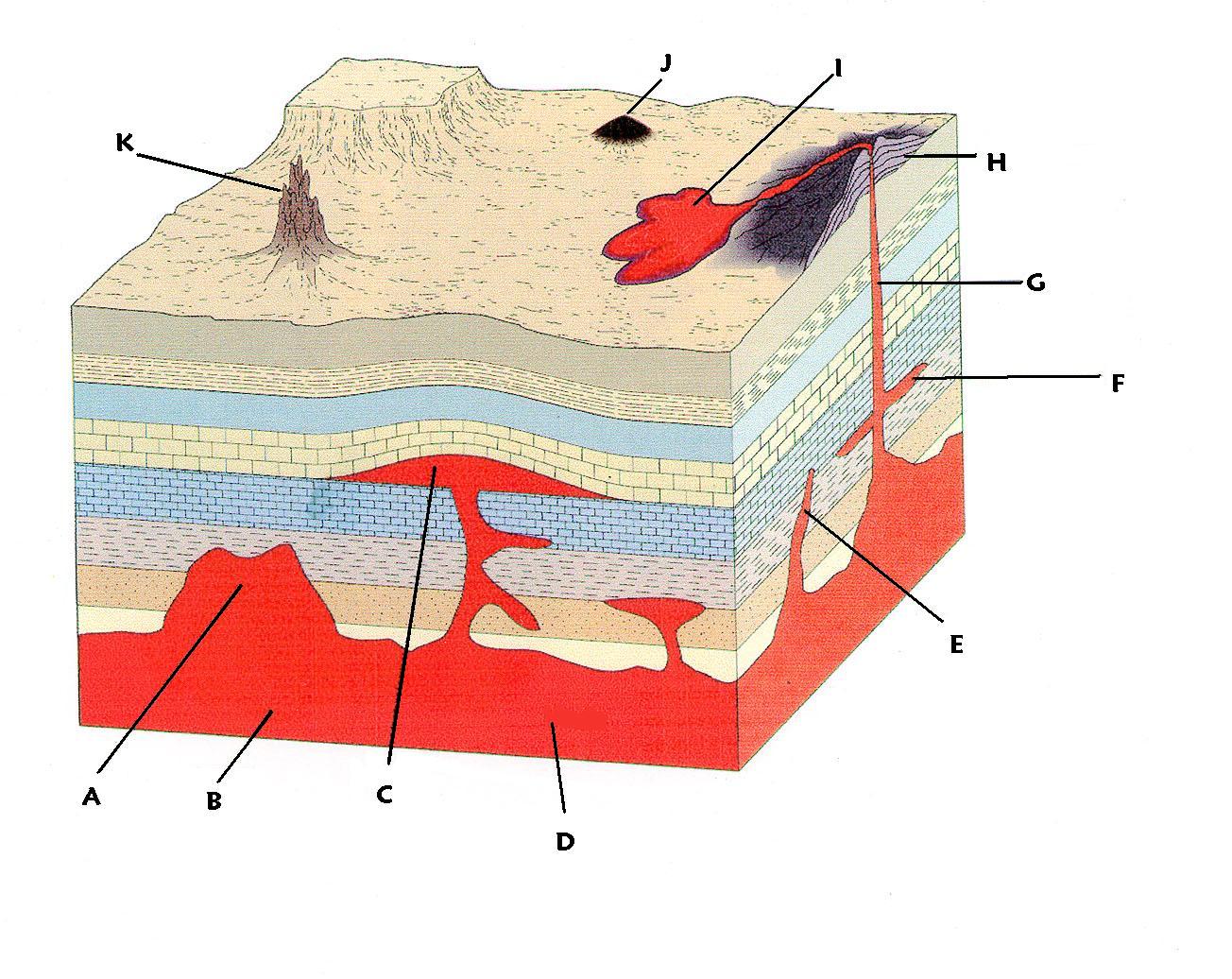
Igneous Rocks
A rock formed by crystallising from a molten state. May form on Earth's surface (from lava) or within the Earth's crust (from magma). Crystallisation may be rapid or slow.
They are easily recognised as the crystals are randomly arranged, but with no spaces between the crystals. They virtually never contain fossils or sedimentary structures.
Sills, Dykes Stocks and Batholiths

image adapted from www.brocku.ca/earthsciences/people/Simon/1f90dial.jpg
The above diagram illustrates several different igneous structures:
| A | Stock | G | Volcanic Pipe |
| B | Batholith | H | Composite Volcano |
| C | Laccolith | I | Lava Flow |
| D | Magma | J | Cinder Cone |
| E | Dyke | K | Volcanic Neck |
| F | Sill | ||
The main intrusion is the batholith, a large mass of magma which has intruded/ replaced a large amount of another rock. They are over 100 km wide and normally form in areas where mountain building is in action.
Stocks are bulges on the tops of batholiths.
Sills and dykes are formed when magma intrudes into rock. Sills form where magma intrudes between layers, they run parallel to the layer. Dykes form when magma intrudes into a rock along lines of weakness such as fractures and fissures. Dykes cut beds and range in size from a few cm to several km.
In the diagram a composite volcano is shown, but depending on the composition of the lava several different types of volcano can be formed.
Return to Rock Types